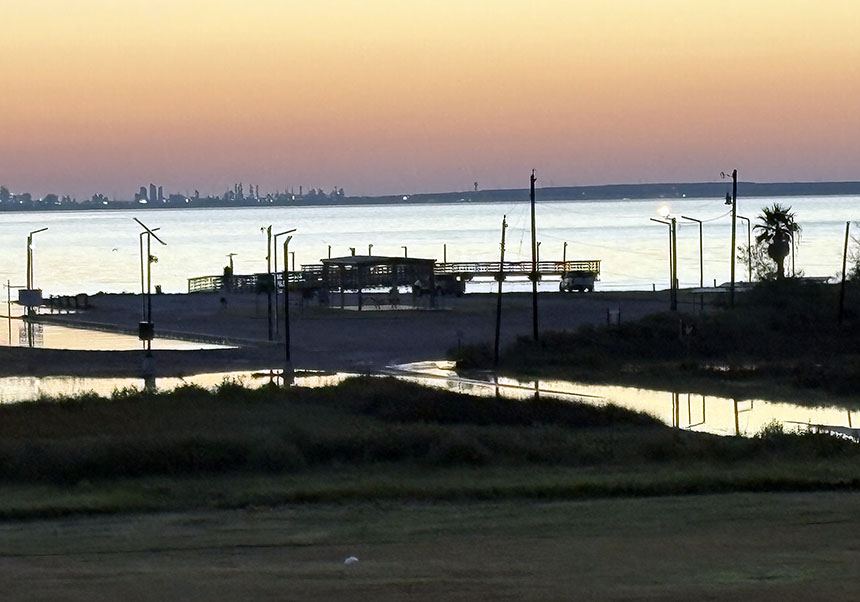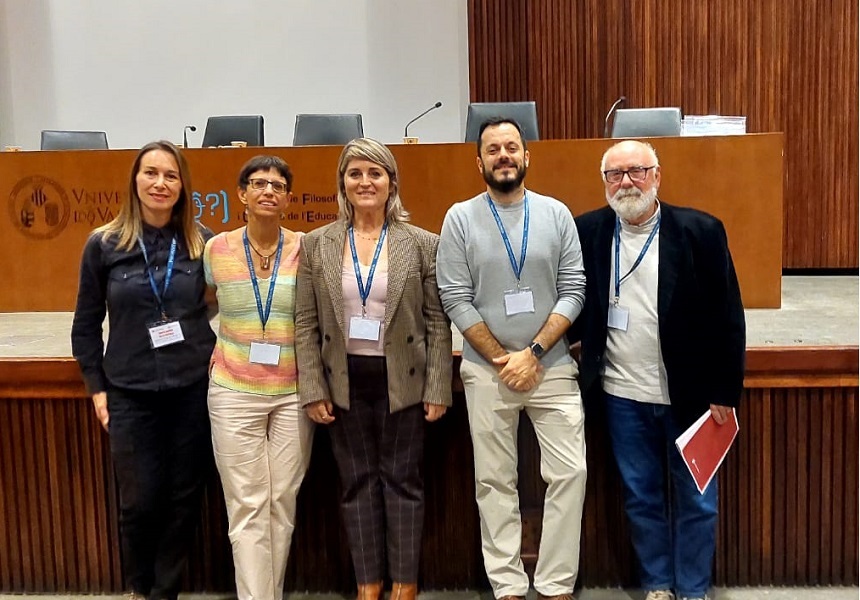International teams use AI to extend sea level forecasting horizons
- Marketing and Communication Service
- Olga Denia Moreno
- October 28th, 2025

An international collaboration between the University of Valencia and Texas A&M University–Corpus Christi has achieved an important advance in the study of seasonal and multi-annual sea level changes. By applying artificial intelligence (AI) techniques, the teams have significantly extended the forecasting timescales of these variations, strengthening coastal planning capabilities and scientific cooperation in ocean research.
An international research collaboration has led to advances that could improve how scientists predict seasonal-to-multi-year changes in sea levels using artificial intelligence (AI). The findings, published in the Journal of Ocean & Coastal Management, highlight a novel use of AI to forecast these types of changes along the Texas Gulf Coast.
Supported through a National Science Foundation (NSF) initiative, the project brought together the AI4OCEANS group at the University of Valencia (UV) in Spain and researchers from the NSF AI Institute for Research on Trustworthy AI In Weather, Climate, and Coastal Oceanography (AI2ES) at the Conrad Blucher Institute for Surveying and Science (CBI) at Texas A&M University-Corpus Christi (TAMU-CC).
Together, the teams developed an AI-driven tool to forecast seasonal-to-multi-year sea level variations along the Texas coast, which is home to some of the nation’s largest ports and communities that are increasingly vulnerable to flooding, subsidence, and sea level rise.
“The need for longer predictions for the coming weeks and months is becoming more important with the fast-growing frequency of inundation along our coast,” said Dr. Philippe Tissot, co-Principal Investigator of AI2ES and Chair for Coastal Artificial Intelligence at CBI. “Traditional forecasting methods are generally designed for short-term conditions, such as tides or storm surges, offering lead times of only hours to a few days. This work focuses on extending those lead times to months and even years, providing a complementary perspective to improve preparedness.”
To create the AI model, researchers combined decades of tide gauge and satellite data with an advanced regional clustering method developed by Dr. Veronica Nieves, Director of UV’s AI4OCEANS group, and Cristina Radin, then a Ph.D. student at UV who completed her degree later that year. “Capturing a shared regional signal was essential to understanding how large-scale ocean patterns influence all coastal stations,” said Nieves. “This approach allowed us to identify the broader processes shaping sea-level variability along the Texas coast.”
Radin and Dr. Marina Vicens-Miquel ‘20 ‘24, who at the time was a doctoral researcher at CBI, trained the AI to recognize patterns along the Texas coastline that influence how water levels rise and fall over time. “The AI model was able to learn patterns that can help predict water levels from months to even years in advance,” said Vicens-Miquel. “This can provide coastal regions earlier indicators and help guide planning over the coming years, especially in areas where data is limited,” added Radin.
The AI model produced forecasts with greater accuracy and reliability than existing predictive methods in the region, providing valuable lead time for coastal planners and resource managers to anticipate periods of higher water levels and support long-term coastal management decisions. It also offers a cost-effective framework that can be adapted to other coastal regions.
Beyond its scientific results, the project illustrates the importance of international collaboration in addressing complex environmental challenges. Both AI2ES and AI4OCEANS are recognized globally for advancing the use of AI in ocean and climate research. In a time marked by increasing challenges for research funding, the success of this collaboration demonstrates how cross-continental cooperation can spark innovation and strengthen coastal resilience worldwide.
Enhancing coastal resilience: AI-driven seasonal to multi-year water level predictions for the Texas Gulf Coast. Marina Vicens-Miquel, Cristina Radin, Veronica Nieves, Philippe E. Tissot. Ocean & Coastal Management. https://doi.org/10.1016/j.ocecoaman.2025.107946
Categories: Física , Ciencias Agrarias , Ciencias Económicas , Ciencias de la Tierra y el Espacio , Geografía , Ciencias Tecnológicas















